-
Australia
Copyright © 2026 Powered by BCI Media Group Pty Ltd
Confirm Submission
Are you sure want to adding all Products to your Library?
Contact Detail
07 Mar 2022 by Verosol

Commercial buildings (such as shops, hotels, restaurants, offices, industrial buildings, schools, hospitals, etc.) are responsible for approximately 10% of Australia’s total greenhouse gas emissions.i
Like residential dwellings, they represent a significant proportion of our climate problem. Every effort should be made to reduce the amount of energy they consume and the amount of carbon they produce.
The good news is that the tools required to make these changes already exist. By using only currently available technologies and methods, the building sector (including both the residential and non-residential sectors) has the means to reduce its greenhouse emissions by 23% by 2030.ii Moreover, by the same means, it could achieve reductions of as much as 55% by 2050.
The ongoing impasse surrounding Australia’s climate policy, only makes the promise of improved energy efficiency more important. Considering the current political climate, in other words, it is more likely to happen than a shift from fossils fuels to renewables. In addition, as McKinsey notes, it is also cheaper and faster.iii
When the question of how to improve energy efficiency in commercial buildings is raised, one important part of the equation – namely, high quality window coverings – tends to be overlooked.
This whitepaper outlines why this omission is a mistake. Examining the various types of commercial window coverings available and the materials used in their manufacture, it makes the case for window coverings as an important element of the energy efficiency picture for commercial buildings.
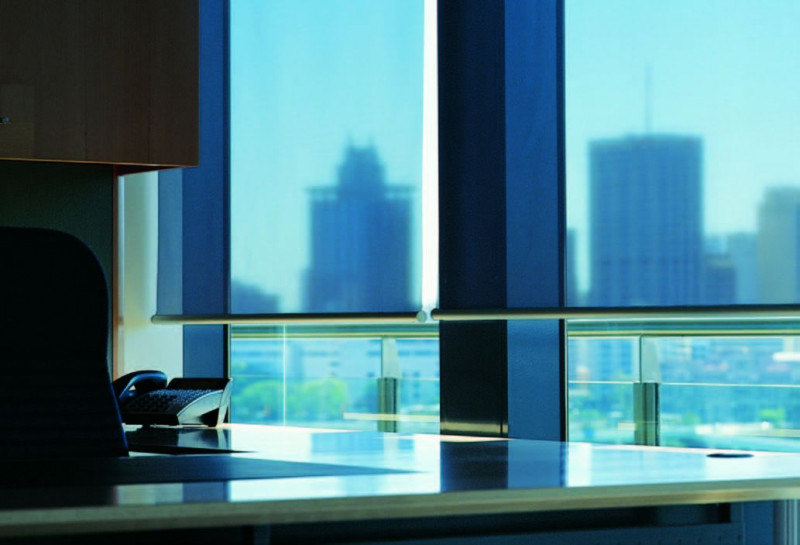
Commercial Buildings and Energy Efficiency
Recognising the importance of energy efficiency, governments have implemented several initiatives to encourage its implementation. The latest update to the National Construction Code (NCC 2019), for example, focussed strongly on energy efficiency in commercial buildings.iv
Working with the states and territories, the Federal Government has also introduced several other initiatives including the National Australian Built Environment Rating System (NABERS), which is an energy ratings system for commercial buildings; Commercial Building Disclosure, which requires sellers and lessors of commercial office spaces of a certain size to provide energy efficiency information to prospective buyers and tenants; and Green leases for the private commercial sector.v
While these measures focus (correctly) on things like HVAC, lighting, metering and monitoring, and building management systems (BMS) as ways to improve efficiencyvi, they tend to forget another important part of the equation – window coverings.
Given that 30% of heating energy is lost through windows and 76% of sunlight that falls on standard double-pane windows enters to become heat, it becomes clear that window coverings deliver more than shade and aesthetic appeal.vii
Indeed, when used smartly, commercial window coverings can reduce heat gain by up to 77% and significantly reduce heat loss in the winterviii. As such, they are an important part of the energy efficiency equation.
Types of Window Coverings
Within a commercial context, the effectiveness of each particular window covering product depends on several factors including the material used in its manufacture; its U-value (a measure of its insulation properties)ix; and its g-value (a measurement of total solar energy transmittance through an object).x
While some are made particularly with glare reduction, heat control or energy efficiency in mind, others are made more for aesthetic appeal.
The best performing products can deliver solar reflectance of up to 85%, solar transmittance of up to 3%, solar absorptance of as much as 12%, and an openness factor of just 2%. All of this translates to high levels of solar reflection, glare reduction and energy savings.
The type of product used is also important. Insulated Cellular Blinds, which feature one or more air layers in a honeycomb cross-section and can be adjusted from either the top or the bottom, are the best performers. In fact, in winter they can cut heat loss through windows by more than 40%, and in summer they can cut solar heat through windows by as much as 80%.xi
While Window Quilts offer similar performance to insulated cellular blinds, and both Window Blinds and Exterior Shutters are particularly effective in terms of reducing heat gain, there are several other products on the market which are less effective and are generally specified for light control or aesthetic benefits.xii
The Smart Building Revolution
Much discussed within the technology and manufacturing communities for the last decade or so has been the Internet of Things: the use of sensors and digital connectivity to allow ‘Things’ (machinery, forklifts, tools, etc.) to communicate with each other and therefore broaden the scope for automation and usher in previously-unimagined efficiency improvements.
Heralded as the new industrial revolution, this technology isn’t only suitable for the industrial sector. It also finds application in the construction sector, where it has given rise to the terms ‘Smart Home’ and ‘Smart Building’.
Though still in its infancy and yet to reach its potential, the Smart Building concept involves occupant-centric control (OCC) of a building’s lighting, heating, cooling, plumbing, security systems and so forth with the aim of maximising the comfort of those within.xiii Importantly, in addition to improving tenant comfort, smart buildings deliver significant benefits in terms of energy efficiency.xiv
Building Management Systems (BMS) are the computerbased control systems at the heart of Smart Buildings. Correctly configured, and used in conjunction the latest motorised window coverings, a BMS receives information like when a room is (or isn’t occupied), and what time of day – at any given time of year – glare becomes a problem for occupants. By ensuring that blinds are open or closed only when they need to be, it helps minimise the need for air conditioning and improve the building’s overall energy efficiency.
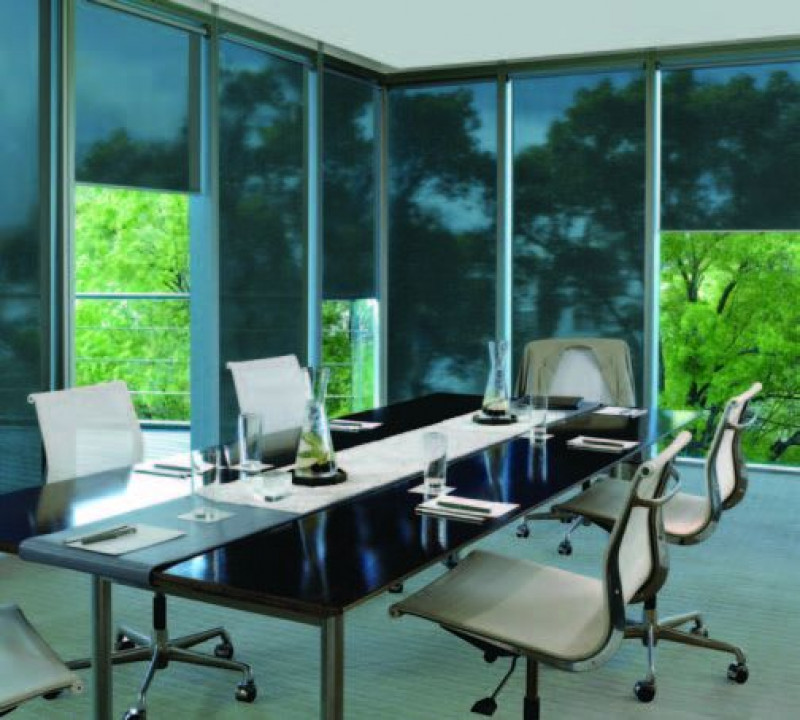
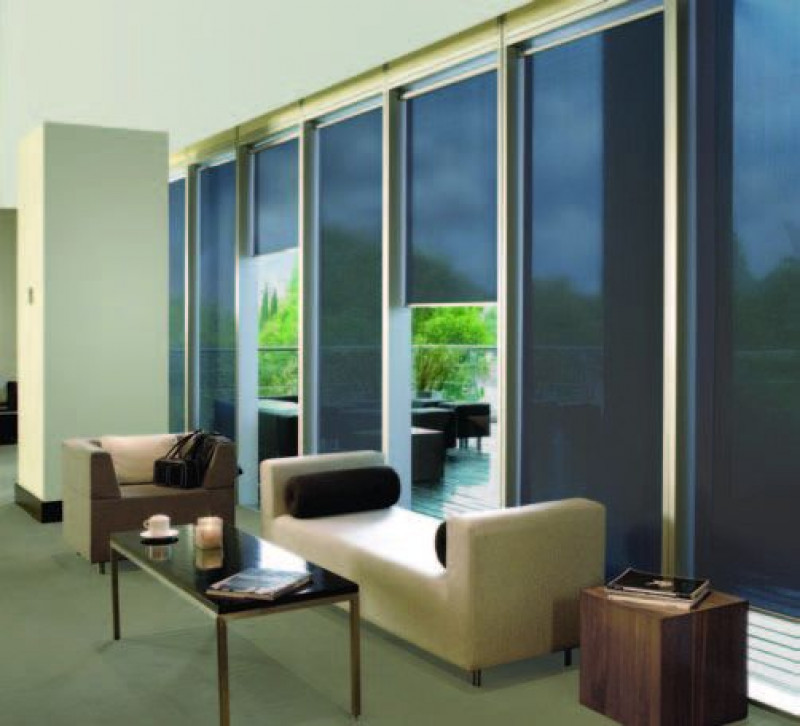
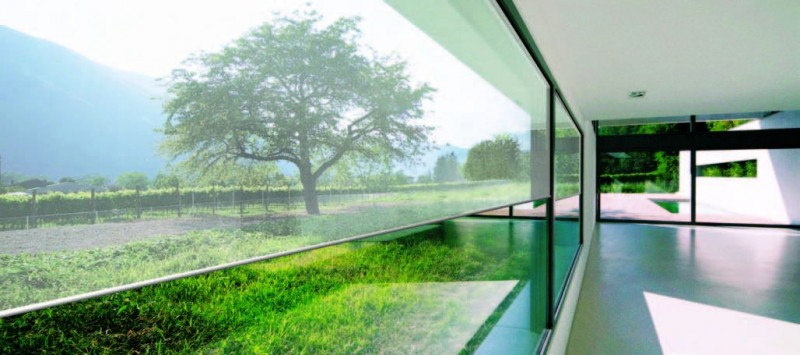
Verosol
Founded in 1963, Verosol is a global leader in window covering solutions. Its signature product, SilverScreen employs a process called metallisation to apply a microscopic layer of aluminium onto fabric for use as window coverings.
Unlike techniques used by other manufacturers, metallisation involves vaporising aluminium in order to allow it to bond and infuse into the fabric. As a result, the fabric and the metal become one.
Used in a range of Verosol blinds and window coverings, SilverScreen reflects up to 85 per cent of solar radiation, virtually eliminates UV radiation, and significantly reduces glare – all while leaving residents’ view to the outside world unaffected.
Low maintenance, anti-static and dust repellent, blinds incorporating SilverScreen also deliver benefits in terms of reducing energy consumption. In air-conditioned buildings they can cut these costs by 20 per cent, while in buildings without air-conditioning they cut costs by approximately 10 per cent.
Used in conjunction with Verosol’s motorised options, which are fully compatible with home building management systems, these products represent the cutting edge of window covering solutions. They are ready to take their place within tomorrow’s digitally connected, energy efficient new world.
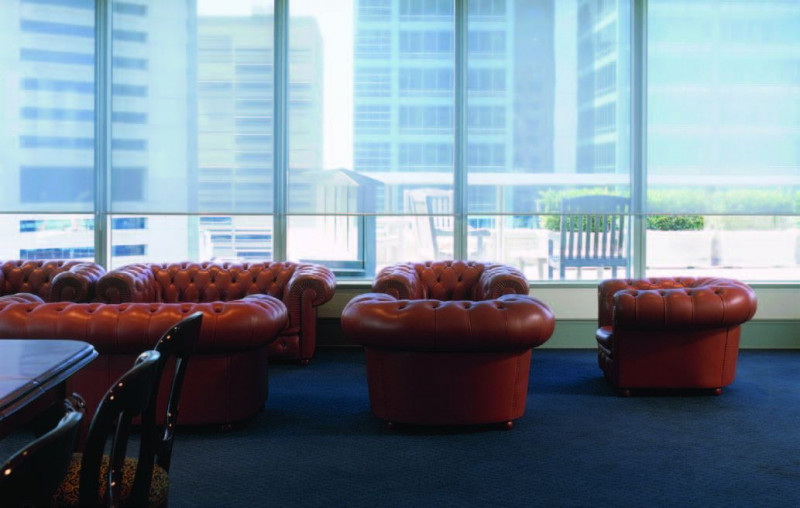
References
i Australian Government. Department of Energy and the Environment. https://www.energy.gov.au/governmentpriorities/energy-productivity-and-energy-efficiency/commercial-buildings
ii Low Carbon, High Performance: How buildings can make a major contribution to Australia’s emissions and productivity goals, Australian Sustainable Built Environment Council (ASBEC), 2016.
iii Per-Anders Enkvist, Tomas Nauclér, and Jerker Rosander, McKinsey & Company. https://www.mckinsey.com/business-functions/sustainability/our-insights/a-costcurve-for-greenhouse-gas-reduction
iv Australian Building Codes Board. “Energy Efficiency” https://www.abcb.gov.au/Initiatives/All/energy-efficiency
v Australian Government. Department of Energy and the Environment. “Commercial Buildings”. https://www.energy.gov.au/government-priorities/energyproductivity-and-energy-efficiency/commercial-buildings
vi Energy Efficiency Council. “Energy Efficiency in Commercial Buildings”. https://www.eec.org.au/forenergy-users/energy-efficiency-in-commercial-buildings/overview#/overview
vii Blind Manufacturers’ Association of Australia, “Saving energy at home”. http://bmaa.net.au/energy-savings-athome/
viii Mary Farrell, “Beat the Summer Heat with Window Coverings: Awnings, Curtains, Blinds, and Shades can keep you Cool and your Utility Bill in Check.” Consumer Reports, 6/07/2017, https://www.consumerreports.org/energy-efficiency/beat-the-heat-with-window-coverings/
ix Blind Manufacturers’ Association of Australia, “Saving energy at home”. http://bmaa.net.au/energy-savings-athome/
x Ibid.
xi Energy.gov. “Energy Efficient Window Attachments” https://www.energy.gov/energysaver/energy-efficientwindow-attachments
xii Ibid.
xiii Mohamed Ouf, “Smart buildings face challenges but have plenty of potential” https://www.sciencedaily.com/releases/2019/11/191120175607.htm
xiv Ibid.



